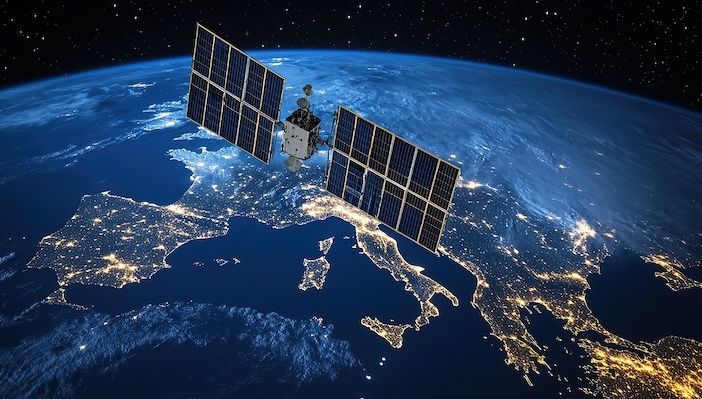At the second plenary session at the ITS European Congress in Seville this week Marco Falcone of the European Space Agency (ESA) announced that the first test satellite in a new low-orbit constellation is on target to launch later this year, marking the start of a new era in transportation connectivity.
The ESA €10 billion plan is aiming to deploy 290 communication satellites by 2030, supplementing Europe’s existing Galileo infrastructure, and paving the way for super-accurate, super low-latency positioning systems in the future.
During the Resilient by Design: Shaping a Competitive Mobility Value Chain plenary session held Monday May 20, 2025, industry leaders and policymakers discussed the progress of this critical infrastructure project and its vital role in ensuring Europe’s transportation security amid increasing geopolitical tensions.
“European Space Agency will launch the first lower orbital satellite by the end of this year, and we will start testing it with the smart community,” said Falcone. “We are creating a multi-layer approach with Galileo in medium orbit and now going to lower orbit, providing enhanced capabilities.”

The satellite expansion project represents one of Europe’s largest space investments. The initiative aims to create a constellation that will not only enhance navigation but also significantly improve Europe’s resilience against increasing threats of interference and spoofing.
“What is becoming more and more scary is the high degrees of interference – jammers to make navigation unavailable – or, even worse, spoofing, which is basically false information sent to a vehicle,” Falcone said, displaying data visualizing interference levels across different regions. “This clearly affects navigation and mass transportation.”
Falcone emphasized that the economic impact of navigation system outages has been quantified at up to $1 billion per day, affecting not just transportation but also power grids, financial transactions, and critical infrastructure.
The plenary session, moderated by Dr. Steven Dellenback of Southwest Research Institute, explored various dimensions of resilience in Europe’s mobility sector against the backdrop of this evolving satellite infrastructure.
Eric von Breska, director of Investment, Innovative & Sustainable Transport at the European Commission’s DG MOVE, outlined how the satellite program fits into broader EU mobility resilience strategies. “We need to work on our regulatory framework because there are many legal obstacles, for example, which do not allow for automated and connected driving across borders,” von Breska said. He emphasized the Commission’s focus on supporting cross-border test phases to ensure new technologies work seamlessly with the enhanced satellite infrastructure.
Laura Elorrieta, Director General of the Data Safety and Security Department from the Finnish Ministry of Communications, highlighted how the satellite expansion supports her vision of “mobility as a feature” rather than just a service.
“It’s really important to see mobility services as part of the resilience that we need,” Elorrieta stated. “It allows us to have situation awareness of the transport fleet services and bring about greater routing and measures needed in case of disruptions. It’s also part of strategic autonomy.”
The panel, which also included Martin Russ, Managing Director of AustriaTech, addressed critical questions about how the satellite system’s security will be maintained. Falcone explained that cybersecurity has become a central focus of the project.
“One of the areas we have been looking into is how can you ensure that the satellite fleet is protected and there is no access, either from the ground and mainly also from space,” Falcone said. “We see the possibility of other satellites approaching satellites. So it is developing satellite systems to ensure security.”
Von Breska emphasized the need to balance strict European data protection standards with innovation requirements: “At the end of the day, we need to find some sort of balance which also allows access to data and data interoperability for mobility services, which is why we’re trying to develop frameworks within the data space.”
In closing remarks, Falcone underscored that global navigation satellite systems are “the invisible utility under which mobility develops” and require “the highest degree of resilience because they have an important impact on society the moment they don’t work.”
The session highlighted how Europe’s substantial investment in satellite infrastructure represents not just a technological advance but a strategic move to ensure resilience in an increasingly contested domain, with implications for everything from autonomous vehicles to supply chain management and emergency services.





